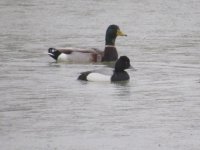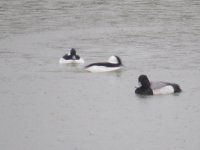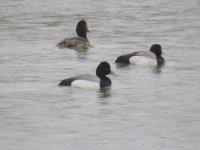chipster454
Well-known member
This is only the second time I've seen Scaup, and I'm not too confident identifying. From what I understand, the difference is in the shape of the head? The Greater Scaup has a rounder head apparently? Also the Lesser Scaup is more common. So with that in mind, I'm thinking these are Lesser Scaup. Just thought I'd post on here to get a more solid confirmation. Thanks in advance. (Sorry about picture quality...It was raining)









